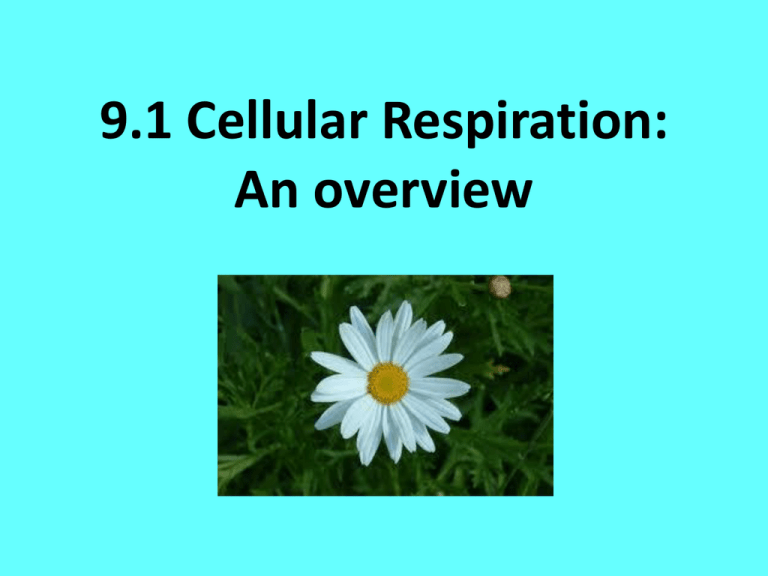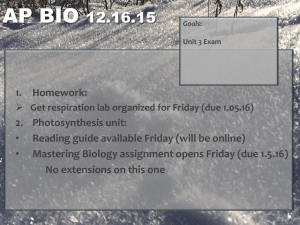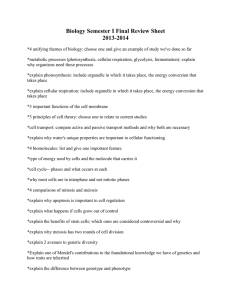9.1 Cellular Respiration: An overview
advertisement

9.1 Cellular Respiration: An overview I. Chemical Energy and Food • Food provides living things with the chemical building blocks they need to grow and reproduce • Cells use fats, proteins and carbs as food – Break this food down gradually II. Overview of Cellular Respiration • Cellular respiration is the multi-step process that releases energy from food in the presence of oxygen • Represented as: 6O2 + C6H12O6 Oxygen Glucose 6CO2 + 6H2O + ENERGY Carbon dioxide Water A. Stages of Cellular Respiration • Cellular respiration captures energy in 3 stages: – Glycolysis – Krebs cycle – Electron transport chain How does it work? 1. Glucose enters chemical pathway called glycolysis - Uses some energy to make ATP, rest stored as pyruvic acid 2. Pyruvic acid enters the Kreb cycle 3. Most energy is extracted during electron transport chain by using oxygen B. Oxygen and Energy • Oxygen is required at end of electron transport chain • Aerobic: pathways that require oxygen – Krebs, Electron transport chain • Anaerobic: pathways that do not require oxygen – Glycolysis, Fermentation Where does this take place? • Glycolysis happens in cytoplasm • The Krebs cycle and Electron transport chain occur in mitochondria III. Comparing Photosynthesis and Cellular Respiration • Cellular respiration is balanced by photosynthesis • Photosynthesis removes carbon dioxide from atmosphere, cellular respiration adds it • Photosynthesis adds oxygen and cellular respiration uses it to make energy from food 9.1 Assessment questions • 2a. Write the overall reaction for cellular respiration. • 2b. How does the process of cellular respiration maintain homeostasis at the cellular level? • 3a. In what ways are cellular respiration and photosynthesis considered opposite processes? • 3b. How is the chemical energy in glucose similar to money in a savings account?





